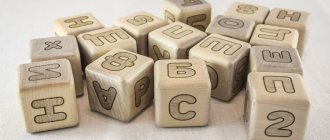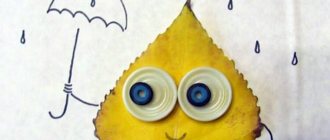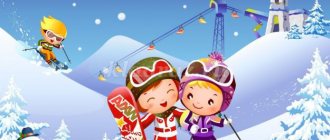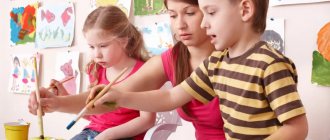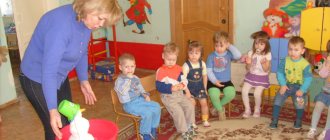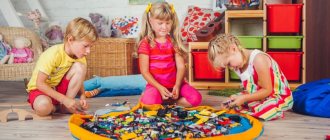The child was left for the second year in the preparatory group of the kindergarten. What to do?
It often happens that a child graduates from kindergarten at 6 years old. There's still a year left until school. And where to conduct it is unclear. Either go back to the preparatory group, or to grade zero, or even to school. Is it legal to leave a child in kindergarten for the second year and what should parents pay attention to in this case?
Useful Mela newsletter twice a week: Tuesday and Friday
SUBSCRIBE
Question.
The child is 6 years old, he graduated from the preparatory group of the kindergarten, but the neurologist insisted that the boy is not yet ready for school. There are seven such children in our kindergarten. The head decides to send them back to the preparatory group. I am worried that the children will not be adequately prepared for school (we have already paid for a speech therapist). Is this considered a violation?
Answer:
Only children who, on September 1 of the current year, will be at least 6 years and 6 months and no more than 8 years old are accepted into the first grades of Moscow schools.
The decision to admit a child under 6 years and 6 months to school is made on an individual basis and only after the child has been diagnosed by a speech therapist and psychologist.
The practice of a child spending two years in the preparatory group of a kindergarten is quite common. In some cases, this is due to the fact that the child went to kindergarten before the age of 3, in others, due to the parents’ decision to postpone school and let the child play enough, grow up and mature psychologically.
Neuropsychologists and neurophysiologists say that the development of mental functions to the required level occurs differently in all children. And some children at 6.5 years old are already ready to go to first grade, while others, despite their well-developed intellect and broad outlook, still “play with dolls” and are not ready to sit through a full lesson even at full 7. And there is nothing in this scary.
The second year of pre-kindergarten is just another year of kindergarten.
Depending on how the system is built in a given preschool institution, the child will either remain with his old teacher, if each age group has its own preschool teacher, or will end up with a new one, if the teacher takes a younger group and leads it before school.
In any case, throughout the year the child will also be involved in all developmental activities in the program according to his age.
You can get acquainted with the program of developmental classes from the senior teacher of the preschool institution, and also, as a rule, on the official website of the school.
In addition, parents have the opportunity to independently choose additional classes for their child to prepare for school through the government services portal - any educational institution operates such clubs, both paid and free. There are also classes for preschoolers there.
Instructions for registering for school preparation or other clubs:
Step 1:
Go to mos.ru or the government services portal in your region.
Step 2:
In the catalogue.
Step 3:
Select “Enroll in clubs, sports sections, creativity houses”
Step 4:
Search for “Introduction to school life”
Step 5:
Select a group that suits your location.
Preschool institutions are part of the educational complex, and often elementary school teachers organize groups for preparation and adaptation to school on the territory of the kindergarten or offer to attend “preparatory classes” on the school grounds. Usually this is 1.5-2 hours twice a week in the afternoon (after a quiet hour in kindergarten).
The decision about a child’s readiness for school and the maturity of all his functions is not made by a neurologist. To do this, you need to undergo a speech therapist and a child psychologist. If parents have doubts about the specialist’s conclusion or want to get additional advice, they can seek specialized help from:
- GPPC (City Psychological and Pedagogical Center);
- Central Psychological-Medical-Pedagogical Commission;
- FRC PMPC (Federal Resource Center PMPC, a structural division of the Center for the Protection of the Rights and Interests of Children).
Anna Poilova, lawyer:
Parents are the legal representatives of their children and act in defense of their rights and interests in relations with any individuals and legal entities (Article 64 of the Family Code). It is the parent who independently decides whether the child should go to school or stay in kindergarten.
All issues related to the upbringing and education of children are resolved by parents by mutual consent, based on the interests of the children and taking into account the opinions of the children.
Whether a child attends school or stays for another year in kindergarten is decided only by the parent or other legal representative of the child, taking into account psychological and pedagogical examination, the conclusion of a neurologist, speech therapist and other specialists. The head of the kindergarten cannot make such a decision.
In case of a controversial situation, the child’s legal representative always has the right to contact the administration of the educational institution or the following departments:
- Courts of general jurisdiction;
- Prosecutor's Office;
- Department of Education and Science of the City of Moscow.
Ask your question to “Mel”, and the editors will find someone who can answer it. Write to our social networks - we read all messages on pages on Facebook, VKontakte and Odnoklassniki. You can also write to us on Instagram. Answers will be published in order in the “Question - Answer” section. By the way, we do not reveal names, so questions can be anything (feel free!).
Photo: Shutterstock/OlegRi
Activities, games, holidays with children 6-7 years old
Showing publications 1-10 of 133266. All sections | Preparatory group
New
Photo
The best
Conversation for children of the preparatory group “Feed the birds in winter”
The birds are hungry in winter, these tiny little ones. Snow covered all the paths, Where can they find crumbs of bread? And the children decided together that the little ones needed help. They ran to the edge of the forest and attached a feeding trough there. - Wait, birds, we’re here again, Let’s make about five more. Together the birds peck at food, New...
Long-term planning of OOD for December in the preparatory group Long-term OOD planning for December Days of the week Winter - winter! Animals of the North and South. 1 week 2 week Monday OO Cognitive development (FEMP)
Lesson 1 Pomoraeva I.A., Pozina V.A.
OOD “Lessons on FEMP”
, page 58. HER
(drawing) “Portrait of a Friend”
by N. Koldin Drawing with…
From the compiler
This book presents the “Program of Education and Training in Kindergarten” and methodological recommendations for all sections of work with children in the preparatory group for school.
Children in their seventh year of life are on the threshold of school; One of the most important tasks of their upbringing and education in the last year of their stay in kindergarten is comprehensive development, the formation of diverse abilities and preparation for school, taking into account age and mental characteristics.
Along with visual and figurative thinking, preschoolers aged 6–7 years intensively develop verbal and logical thinking, cognitive interests, and independence; the arbitrariness of behavior and actions is strengthened, a higher level of consciousness of one’s capabilities is formed. This requires increasing the complexity of all types of children’s activities and is reflected in the content of work with preschoolers, in preparing them for school, which is carried out in all areas of activity.
The individual characteristics and abilities of children in the school preparatory group are revealed more clearly. Teachers and parents should take this into account, giving children more freedom and independence in expressing preferences in choosing decisions, while at the same time tactfully guiding them, providing assistance as necessary, and positively assessing the results of their actions.
Important conditions for effective work with children in the preschool group according to the “Program of Education and Training in Kindergarten” and “Methodological Recommendations” are:
• continuity between previous age groups and this group, as well as between the preparatory group and primary school;
• the relationship of all sections of educational work with preschoolers, an integrated approach to building the pedagogical process;
• a variety of forms and methods of raising and teaching children, a reasonable combination of classical and innovative areas of work, taking into account the specifics of the content of the work;
• respect for the child and creation of conditions for the development of his various abilities;
• comprehensive preparation of children for school without unnecessary pressure and overload;
• interaction between kindergarten and parents;
• taking into account the specifics of the preschool institution, regional characteristics.
When preparing the manual, the team of authors was based on the achievements of domestic and foreign pedagogical theory and practice.
Program
Age-related characteristics of children's mental development
In role-playing games, children of the seventh year of life begin to master complex interactions between people, reflecting characteristic significant life situations, for example, a wedding, the birth of a child, illness, employment, etc.
Game actions become more complex and take on a special meaning that is not always revealed to adults. The playing space is becoming more complex. It can have several centers, each of which supports its own storyline. At the same time, children are able to monitor the behavior of partners throughout the playing space and change their behavior depending on their place in it. Thus, the child already addresses the seller not just as a buyer, but as a buyer-mother or buyer-driver, etc. The performance of a role is emphasized not only by the role itself, but also by the part of the playing space in which this role is played. For example, playing the role of a bus driver, a child commands passengers and obeys the traffic police inspector. If the logic of the game requires the emergence of a new role, then the child can take on a new role during the game, while maintaining the role taken previously. Children can comment on the performance of a role by one or another participant in the game.
Images from surrounding life and literary works conveyed by children in visual activities become more complex. The drawings become more detailed and their color range is enriched. The differences between the drawings of boys and girls become more obvious. Boys willingly depict technology, space, military operations, etc. Girls usually draw female images: princesses, ballerinas, models, etc. Everyday scenes are also common: mother and daughter, room, etc. With the right pedagogical approach Children develop artistic and creative abilities in visual arts.
The image of a person becomes even more detailed and proportional. Fingers, eyes, mouth, nose, eyebrows, chin appear. Clothing can be decorated with various details.
Children in the pre-school group have largely mastered construction using building materials. They are fluent in generalized methods of analyzing both images and buildings; not only analyze the main design features of various parts, but also determine their shape based on the similarity with familiar three-dimensional objects. Free buildings become symmetrical and proportional, their construction is carried out on the basis of visual orientation. Children quickly and correctly select the necessary material. They quite accurately imagine the sequence in which the construction will be carried out, and the material that will be needed to complete it; are able to carry out constructions of varying degrees of complexity, both according to their own plans and conditions.
At this age, children can already master complex forms of folding from a sheet of paper and invent their own, but they need to be specially taught this. This type of activity is not just accessible to children - it is important for deepening their spatial understanding.
Design from natural materials becomes more complicated. Children already have access to holistic compositions based on a preliminary plan, which can convey complex relationships and include figures of people and animals in various conditions.
Preschoolers continue to develop perceptions, but they cannot always take into account several different signs at the same time. Figurative thinking develops, but the reproduction of metric relationships is difficult. This can be easily checked by asking children to reproduce on a piece of paper a sample on which nine dots are drawn that are not located on the same straight line. As a rule, children do not reproduce metric relationships between points: when drawings are superimposed on each other, the points of the child's drawing do not coincide with the points of the sample.
Generalization and reasoning skills continue to develop, but they are still largely limited to visual signs of the situation.
Imagination continues to develop, but it is often necessary to note a decrease in the development of imagination at this age in comparison with the older group. This can be explained by various influences, including the media, leading to stereotypical images of children.
Attention continues to develop, it becomes voluntary. In some activities, voluntary concentration time reaches 30 minutes.
Children continue to develop speech: its sound side, grammatical structure, vocabulary. Coherent speech develops. Children's statements reflect both the expanding vocabulary and the nature of generalizations that are formed at this age. Children begin to actively use generalizing nouns, synonyms, antonyms, adjectives, etc. As a result of properly organized educational work, children develop dialogic and some types of monologue speech.
In the preschool group, preschool age ends. His main achievements are related to the mastery of the world of things as objects of human culture; children master forms of positive communication with people; Gender identification develops and the student’s position is formed.
By the end of preschool age, the child has a high level of cognitive and personal development, which allows him to successfully study at school in the future.
Objectives of education and training
Continue the comprehensive education and development of children, strengthen their health, and improve physical development. Develop cognitive interests, cultivate sustained attention, observation, develop interest in educational activities and the desire to study at school. Develop the ability to analyze and synthesize, self-control, and self-assessment when performing work.
Based on expanding knowledge about the environment, cultivate patriotic and international feelings, love for the native land, the Motherland. To reinforce the idea that people of different nationalities live peacefully in our country.
Continue to develop labor skills and abilities, cultivate diligence.
Improve all aspects of speech; teach children to use both short and common forms of answer, depending on the nature of the question posed, and to complement the statements of their comrades. Prepare children to learn to read and write. Continue to develop phonemic awareness and speech sound analysis skills.
To develop the artistic and creative abilities of children in various types of artistic activities. Develop aesthetic perception, enrich figurative ideas, aesthetic feelings, sense of rhythm, form, proportions, aesthetic appreciation, artistic taste, aesthetic attitude towards the environment, art and artistic activity. Continue to develop an interest in classical and folk art (musical, visual, literature, architecture).
To cultivate organization, discipline, collectivism, respect for elders, a caring attitude towards children, the ability and desire to independently unite for joint play and work, to help each other, and to kindly evaluate the activities of peers.
Continue to develop the skills of educational activities: listen carefully to the teacher, act according to the plan proposed by him, as well as independently plan your actions, carry out the assigned mental task, correctly evaluate the results of your activities, form the beginnings of control over ways to solve the educational task.
Approximate daily routine
Note.
The daily routine is designed to accommodate a child's 12-hour stay in kindergarten. The total duration of classes is indicated, including breaks between them.
The mode can be adjusted taking into account the operation of a specific preschool educational institution (time of year, length of daylight hours in the summer, climate in the region, availability of a swimming pool, etc.).
Physical education
Continue to improve the health of children and introduce them to a healthy lifestyle. To develop creativity, independence, initiative in motor actions, a conscious attitude towards them, the ability to self-control, self-esteem when performing movements. Develop interest and love for sports.
Indicators of physical development of children
Physical development of boys from 6 to 7 years old
Physical development of girls from 6 to 7 years old
Note.
The table is printed based on the book by Samarin V.M., Vorontsov I.M. History of child development. – St. Petersburg. – 2000. – P. 136–143.
Physical education and health work
Systematically carry out various types of hardening procedures under the guidance of medical workers, taking into account the individual characteristics of children.
Do morning exercises every day for 10–12 minutes.
During activities that require a lot of mental stress, and in the intervals between them, do physical exercises lasting 1-3 minutes.
If appropriate conditions exist, provide swimming and hydro aerobics training.
Ensure sufficient age-appropriate physical activity of children throughout the day, using outdoor, sports, folk games and physical exercises.
Conduct physical education activities once a month lasting up to 40 minutes, and physical education holidays (winter and summer) lasting up to 1 hour twice a year.
Grounds for deduction.
A preschool educational organization develops regulatory documents based on the Model Regulations on Preschool Educational Institutions, approved by Decree of the Government of the Russian Federation No. 666 of September 12, 2008.
The document states that a preschooler must be under 7 years of age to enter the institution. There are no other age limit indications in the document.
Therefore, a child can continue studying if the parents think that it is too early for him to go to 1st grade.
The grounds for expelling a minor from a preschool educational institution may include:
- parental statement;
- medical indications;
- large debt or late payment for the care and supervision of a minor;
- violation of the terms of the agreement between parents and the administration of the institution, etc.
A child may be expelled from kindergarten if he has completed an educational program. Repeated mastery of programs with the same content is not permitted by the Law “On Education”.
PMPC Commission.
However, the pupil can remain in the preschool educational institution in the same group if, based on the results of passing the psychological, medical and pedagogical commission, he has not mastered the content of the program.
If a child who turned 7 years old on September 1 does not go to school, passing the commission is mandatory.
This question is especially relevant for parents of children from compensatory groups.
PMPK specialists can write in recommendations to leave the child in kindergarten to repeat the course if the student needs it.
In addition, the conclusion may contain recommendations for admission to school and training according to an adapted program.
Parents need to know that the PMPk conclusion is an important, but not mandatory document when entering school.
They may not submit it along with other papers. In this case, the child will study on a general basis in a regular class.
Application for PMPK for a child from parents. Sample. [15.55 KB]
Methods and means of preparing developmental classes
Developmental classes require a careful selection of a combination of methods, that is, a set of ways to implement educational tasks. In this case, the unit of implementation of the method will be a technique - a practical element of work, which, in turn, requires the rational use of means - a set of objects of the subject-development environment and tasks, that is, exercises.
Below is a table where all these concepts are combined into a single system aimed at achieving the objectives of developmental classes.
Table: methods, techniques and exercises for development classes in the preparatory group
| Method | Reception | The essence | Exercises |
| Speech | Questions | In the preparatory group, this technique helps to implement a heuristic approach to acquiring new knowledge: children themselves reach new knowledge. | “Create your own version of a fairy tale” (to develop imagination). The teacher invites the children, based on the answers to the questions, to create their own version of the development of the plot in the fairy tale. Questions for the fairy tale “Turnip”:
|
| Instructions | It is used in developmental classes in physical education, artistic creativity, speech development, physical exercises to guide the progress of children’s work. | At a speech development lesson on the topic “Here the kittens are acrobats,” the teacher invites children to make up sentences with the words: circus, cinema, park: “Look at the cards on the board. Read the words and make up sentences with them.” | |
| Explanation | In parallel with explaining the material through explanation, the teacher develops in children a sense of language and the ability to logically structure monologue and dialogic speech. | At a lesson on speech development on the topic “Polite Words,” the teacher explains to the children the origin of the word “Thank you”: “In ancient times, the word thank you was pronounced as “God bless”: this is how people thanked higher powers for their kind attitude towards them. Over time, the word turned into our usual “thank you,” and the meaning became more material - people express gratitude to each other for various kinds of favors.” | |
| Conversation | The dialogue form of working with children is the most productive, as it gives the children the opportunity to feel like adults, significant, and also, like explanations, helps them learn the rules for constructing logical statements. | In the preparatory group, conversations are conducted of two types: cognitive and ethical. You can see examples of both in the file of conversations for the preparatory group. | |
| Proverbs, sayings, riddles, poems | These techniques are commonly used to motivate children. Rhymes not only attract children's attention, focus them on joint activities, but also develop memory and vocabulary. | To begin considering the topic of music “Motley Pages” related to the study of the seasons, you can begin with a discussion of sayings and proverbs:
The topic of getting to know the outside world “Space” can begin with solving riddles:
Poems can be used not only at the beginning of a lesson, but also at the end, to summarize the study of the material. For example, a FEMP lesson on the topic “Geometric shapes” can be summarized with a rhyme, after listening to which, children name all the mentioned geometric bodies:
| |
| Tongue Twisters | Help kids practice diction. |
| |
| Visual | Images | The visual-figurative type of thinking of children requires rich illustrative material for each topic, which helps to move more easily and quickly to the next stage of perception development - abstract-logical. | |
| Demonstration | The teacher personally shows the entire procedure for performing the exercise. | In classes on the basics of literacy, the teacher shows the elements of writing letters, and on the applique - the order of applying image elements to the substrate. | |
| Show | Presentation of material in the form of videos. Typically used as a basis for conversation. For example, topics for developing ideas about safety in everyday life can be illustrated with a series of cartoons about Arkady Parovozov. Children watch the episode, and then discuss its content and, together with the teacher, formulate rules for safe behavior. | ||
| Observations | A technique that allows you to systematize knowledge about the world around you. | Examples of tasks within the framework of implementing various developmental tasks can be found in the observation file for the preparatory group. | |
| Game | Didactic | Used to familiarize, systematize, and generalize the material. | By clicking on the link, you can familiarize yourself with a card index of didactic games on various topics for children 6–7 years old. |
| Movable | Designed to help children practice basic movements, as well as satisfy the need for physical activity. | The card file of outdoor games in the preparatory group is presented here. | |
| Theatrical | Develops children's creative abilities and reveals their creative potential. | You can see examples of theatrical games here. | |
| Role-playing | They form ideas about patterns of interaction between people in different circumstances (in the hospital, at work, at home). | Examples of tasks can be found in the file of role-playing games for the preparatory group. | |
| Finger | They train fine motor skills, which helps prepare the hand for writing, and this is an important indicator of a child’s readiness for school. | "Cockroaches"
| |
| Practical | Experiments | Children learn to draw conclusions about the phenomena of the surrounding reality through practical interaction with it. | You can view the card index of tasks and the progress of experiments in the preparatory group here. |
| Modeling | Creation of models illustrating connections between elements and properties hidden from direct view. Modeling can be a method of implementing the task of involving parents in educational activities, when children together with adults create models. | Modeling can be made from building material (constructor parts, mosaics), or it can be made from paper. For example, when studying the topic “Modes of Transport,” children make a ship from Lego parts using a design diagram. A version of the project with parents is the “Roadway” layout, with the help of which children can practice traffic rules. | |
| Drawings | A technique that is used not only in classes on artistic and creative development of the corresponding profile, but also as an element of consolidating material in classes in various educational areas. In the preparatory group, children practice previously learned non-traditional drawing techniques (monotype - mirroring traces of paint by applying patterns on one side of a sheet of paper folded in half, drawing with soap bubbles, stamps, etc.). Examples of a card index of drawing themes in non-traditional techniques can be seen in the publication of teacher Pylnova D.K. | ||
| Applications | Like drawings, applications are used in lessons in various areas. For example, to get acquainted with the outside world and consider the signs of different seasons, the applique can be made from pieces of colored paper. | ||
Video: presentation reception - a large collection of tips from Arkady Parovozov
Video: experimenting “Molecules and Bubbles” at a developmental lesson on familiarization with the environment in the preparatory group
Photo gallery: practical techniques in developmental classes
In the process of modeling from building materials, children learn to disassemble assembly diagrams
Imaginative representation of different seasons develops creativity in children
Completing challenging crafts can be a group activity or a project for children and parents
Features of admission to kindergarten.
The relationship between the parent of the pupils and the administration of the institution is regulated by an agreement signed between the parties when the child is enrolled in the educational organization.
In addition, the administration of the kindergarten is guided by Law No. 273-FZ of December 29, 2012, the institution’s Charter and regulations.
Local regulations of an educational organization must specify the age of students, the conditions of their education, the rights and responsibilities of the children’s parents, and the institution’s staff.
Traditionally, the school year in preschool institutions begins on September 1. From this day on, children are usually enrolled in new educational groups.
At the same time, an application to the education department to enroll a child in kindergarten is submitted from April 15 to June 30.
Deadlines may vary depending on the region. They need to be checked with your local education department.
Documents for enrollment in a preschool institution.
In order for a child to be enrolled in a preschool organization, parents need to prepare the following documents:
- statement;
- birth certificate of a minor;
- SNILS;
- a document confirming the child’s registration at this address.
The list may vary depending on the region and the age of the minor.
If parents want to send their child to a compensatory group, then they must undergo a PMPK commission and attach the results of the examination.
